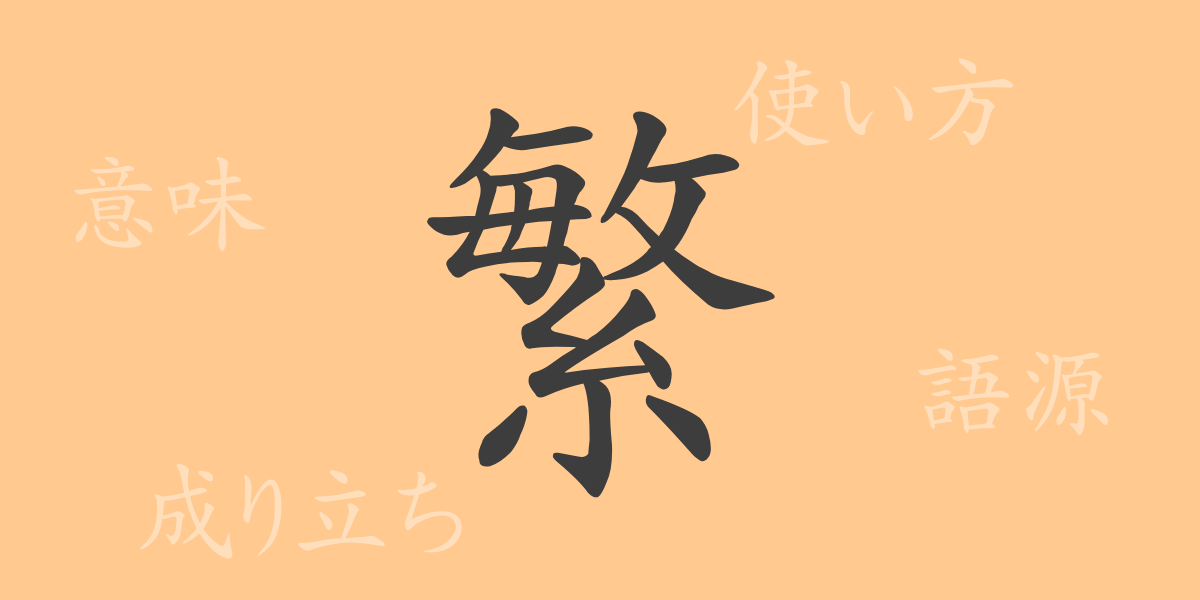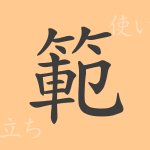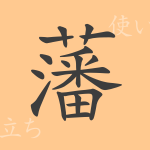In the Japanese language, there are numerous kanji characters, each possessing its own unique beauty and complex meanings. In this article, we focus on the 常用漢字 (jōyō kanji) “繁” (han), delving into its origins, meanings, usage, and even exploring idiomatic expressions and phrases that incorporate this character. Let’s embark on a journey together to explore the world of “繁” (han), appreciating the deep history and culture embedded in each kanji.
The Origins of 繁 (han)
The kanji “繁” (han) has evolved from ancient Chinese pictographs. The original form combined the radical “糸” (ito-hen), which represents many threads, with “彡” (san), depicting the shape of a hand pinching the threads. This imagery illustrates the complexity of many threads intertwined. Consequently, “繁” (han) initially referred to the densely woven nature of textiles, and over time, it came to signify “numerous,” “complex,” and “prosperous.”
Meanings and Usage of 繁 (han)
The kanji “繁” (han) conveys meanings such as “numerous and flourishing” or “prosperous” and “luxuriant,” as seen in words like “繁盛” (hanjō) and “繁茂” (hanmō). Additionally, it can imply “busy” or “complicated,” as in “繁忙” (hanbō) or “繁雑” (hanzatsu). In Japanese, “繁” (han) is used to describe situations where things are abundant or activities are vigorous.
Reading, Stroke Count, and Radical of 繁 (han)
The kanji “繁” (han) adds rich expression to Japanese texts due to its distinctive form and meaning.
- Reading: The on’yomi (音読み) is “ハン” (han), and the kun’yomi (訓読み) is “しげ.る” (shige.ru) and “しげ.しい” (shige.shii).
- Stroke Count: It consists of 16 strokes in total.
- Radical: The radical is “糸” (ito-hen).
Idiomatic Expressions, Phrases, and Proverbs Using 繁 (han)
There are numerous idiomatic expressions, phrases, and proverbs in Japanese that include “繁” (han). For instance, “繁栄” (han’ei) means flourishing or thriving, and “繁昌” (hanshō) refers to thriving business activities. “繁忙期” (hanbōki) denotes a very busy period, and “繁殖” (hanshoku) refers to the reproduction of living organisms. Additionally, the idiom “繁文縟礼” (hanbun-jokurei) criticizes procedures that are overly complicated and cumbersome.
Conclusion about 繁 (han)
Through this article, we hope you have gained a comprehensive understanding of the multifaceted nature of the kanji “繁” (han) and its rich meanings and usage. In Japanese, kanji serve roles beyond mere characters, conveying culture and history through language. It is essential to continue appreciating the profound meanings embedded in each kanji, like “繁” (han), and rediscovering the beauty of the Japanese language. Characters like “繁” (han) add vibrancy to any text, enriching the world of words.

























